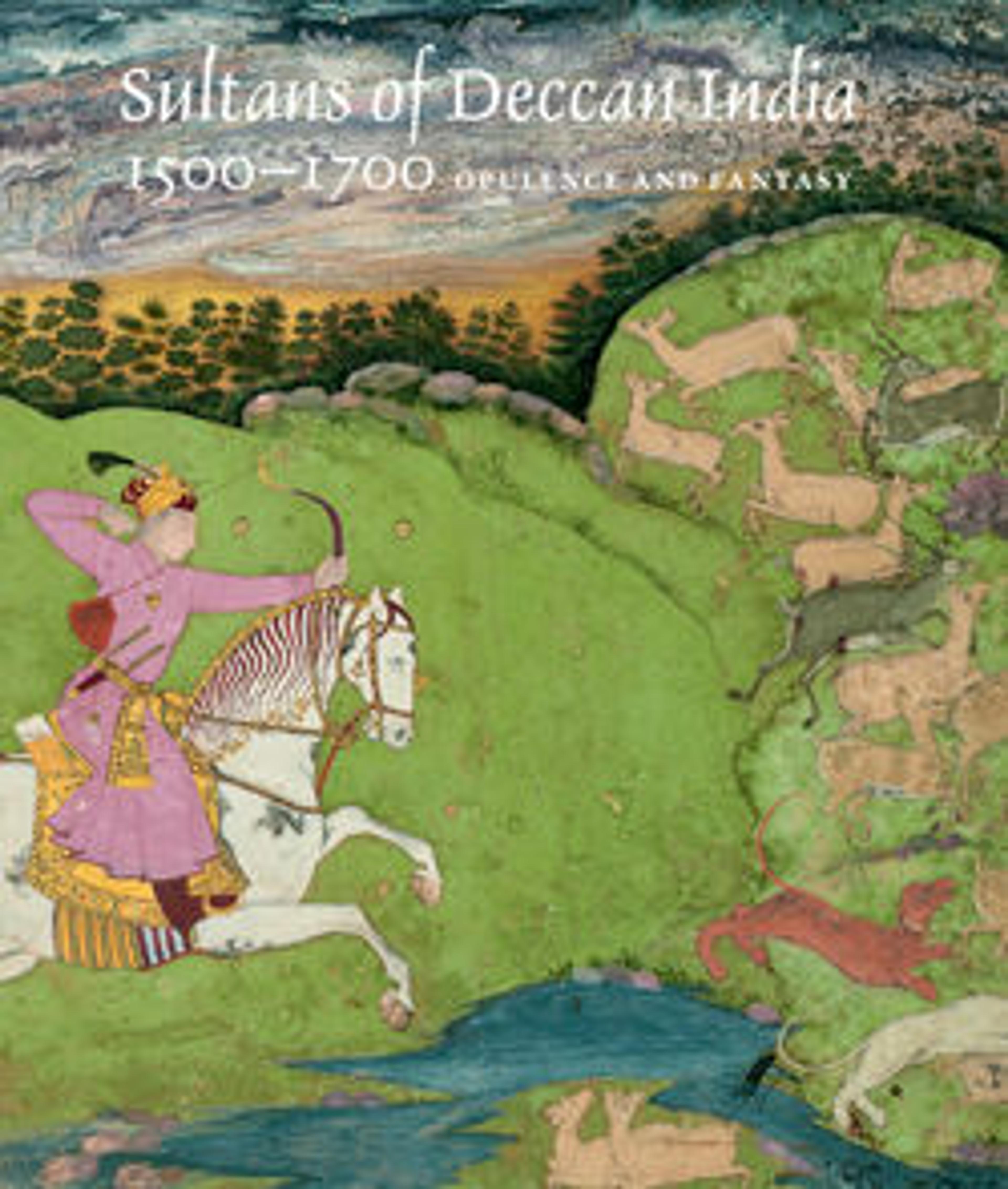Coverlet
Embroidered in China with a dragon roundel at its center and four distinctive figures dressed in European garments in the surrounding field, this coverlet reflects the two disparate worlds of East and West and the contradictions that arose from artistic exchange between them. The men wear breeches and doublets, whose style and cut generally conform to late sixteenth- and early seventeenth century European dress.¹ Yet these Western garments, depicted with detailed embroidery, bear certain characteristic Chinese motifs: one man has a dragon design on his doublet, while another’s costume shows a typically Asian auspicious motif of intersecting diamonds within a diagonal lattice. In addition, the men’s features—including wispy mustaches and beards—have an Asian character. While the embroiderer may have intended to represent Portuguese gentlemen, there is a certain mixing of imagery and types here that is seen in other decorative arts of the period that depict foreigners, such as the painted Japanese Namban screens showing the "barbarians" arriving in Japan.²
The basic design of the coverlet, which at some point was lined in a vibrant clamp resist-dyed silk from India (MMA 1975.208a-c), consists of a central roundel in a field surrounded by one or more borders; although this layout is frequently seen in works made for export, it also appears in domestic Chinese kang (daybed) covers.³ Its imagery—including dragons flanking a flaming jewel, the birds and flowers of the border, and the Chinese-style lions in each corner—is common in Chinese textiles. Some of the details, however, are unusual, or are combined in unexpected ways, suggesting the involvement of a European trader or client unfamiliar with the selection and placement of motifs in Chinese iconography. The jewel between the dragons, for example, is uniformly surrounded by flames, resembling a Western sun more than the characteristic Asian flaming jewel. And the lotus pond at one edge of the border, which would normally be the backdrop for pairs of waterfowl, such as ducks or egrets,⁴ instead features large pheasants, more often depicted in a dry, rocky setting.
[Melinda Watt, adapted from Interwoven Globe, The Worldwide Textile Trade, 1500-1800/ edited by Amelia Peck; New York: Metropolitan Museum of Art; New Haven: distributed by Yale University Press, 2013]
Footnotes
1. Arnold, Patterns of Fashion, pp. 69, 86.
2. See Henriques et al., Portugal and the World, pp. 354–55.
3. A Chinese textile with a central roundel, created for domestic consumption, is in the Metropolitan Museum (acc. no. 69.246).
4. The lotus pond with waterfowl was an important textile pattern and literary theme at the imperial court during the Yuan period (1271–1368); see Denney, "Mongol Dress," pp. 80–81. The pattern continues in the Ming and Qing dynasties; see Shan, Zhixiu shuhua, pp. 89, 246–47.
The basic design of the coverlet, which at some point was lined in a vibrant clamp resist-dyed silk from India (MMA 1975.208a-c), consists of a central roundel in a field surrounded by one or more borders; although this layout is frequently seen in works made for export, it also appears in domestic Chinese kang (daybed) covers.³ Its imagery—including dragons flanking a flaming jewel, the birds and flowers of the border, and the Chinese-style lions in each corner—is common in Chinese textiles. Some of the details, however, are unusual, or are combined in unexpected ways, suggesting the involvement of a European trader or client unfamiliar with the selection and placement of motifs in Chinese iconography. The jewel between the dragons, for example, is uniformly surrounded by flames, resembling a Western sun more than the characteristic Asian flaming jewel. And the lotus pond at one edge of the border, which would normally be the backdrop for pairs of waterfowl, such as ducks or egrets,⁴ instead features large pheasants, more often depicted in a dry, rocky setting.
[Melinda Watt, adapted from Interwoven Globe, The Worldwide Textile Trade, 1500-1800/ edited by Amelia Peck; New York: Metropolitan Museum of Art; New Haven: distributed by Yale University Press, 2013]
Footnotes
1. Arnold, Patterns of Fashion, pp. 69, 86.
2. See Henriques et al., Portugal and the World, pp. 354–55.
3. A Chinese textile with a central roundel, created for domestic consumption, is in the Metropolitan Museum (acc. no. 69.246).
4. The lotus pond with waterfowl was an important textile pattern and literary theme at the imperial court during the Yuan period (1271–1368); see Denney, "Mongol Dress," pp. 80–81. The pattern continues in the Ming and Qing dynasties; see Shan, Zhixiu shuhua, pp. 89, 246–47.
Artwork Details
- Title:Coverlet
- Date:17th century
- Culture:Chinese, for European market
- Medium:Silk satin, embroidered with silk and gilt-paper-wrapped thread
- Dimensions:H. 84 x W. 79 inches (213.4 x 200.7 cm)
- Classification:Textiles-Embroidered
- Credit Line:Rogers Fund, 1975
- Object Number:1975.208d
- Curatorial Department: European Sculpture and Decorative Arts
More Artwork
Research Resources
The Met provides unparalleled resources for research and welcomes an international community of students and scholars. The Met's Open Access API is where creators and researchers can connect to the The Met collection. Open Access data and public domain images are available for unrestricted commercial and noncommercial use without permission or fee.
To request images under copyright and other restrictions, please use this Image Request form.
Feedback
We continue to research and examine historical and cultural context for objects in The Met collection. If you have comments or questions about this object record, please contact us using the form below. The Museum looks forward to receiving your comments.
